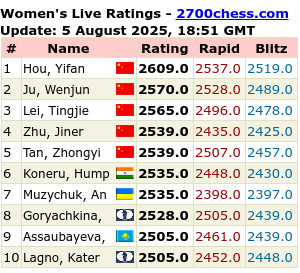First game of the T45 cycle, and I am lucky enough to be drawn as White against an opponent within 50 points of me, so I was hoping for a relatively balanced game.
Checking my opponents games, I noticed that he usually played the Petroff against e4, which didn't excite me, but I thought that it would be possible to switch into something more to my liking if I played 3.Nc3.
This is exactly what happened, and after d4, I end up in a Scotch Four Knights so gaining quite a lot of time as he stuck to the mainline for 11 moves : very useful !
Here I have played 11.Ne2.
[Black plays 14...c5]
I reply with 15.Bxd6 and an exchange follows...On reflection Nf5 is probably the better move but the exchanges leave my bishop well-placed in my eyes, and also remove the threat of Bxg3, so I am happy with this.
I'm not quite sure why 17...Rad8 is played, possibly to allow the Queen to move away from the d-pawn, but it allows me to seize the e-file, and the subsequent exchange of all the rooks brings me to this, after 21...Nxe8.
I think this is quite balanced, but that White has better pawns, although Black has more centre control.
In fact Black plays the better Nd6 to activate his Knight and also threaten the Bishop.
There followed 24...Nc4 25.Qd3 Qc6 26. b3 which gave me a chance to relieve the pressure as I now have the knight as a target. I expected a capture on b2, but Black elected to defend his d-pawn instead.
[Black plays 25...Ne5]
Black plays 33...Nxf5 and I think this seals his fate. The slightly better Nb5 threatens Nc3 but with moves such as h4, g5, and subsequent kingside pawn exchanges put Black on the defence as well.
The Knight-for-Bishop exchange of move 33 puts White in control with a King firmly centred, and after a5 I feel confident enough to refuse the offered draw. I'm not the best endgame player, but I can see that even though material is equal White has the advantage that all Black's pawns advances are blocked and eventually the Black king will have to retreat to e7.
I'm sure my next moves aren't the most accurate, but this position almost plays itself, and after 37.a4 finally means that Black must either lose a pawn or retreat the King with subsequent loss.
Zugzwang is, I think the technical term, but I've never really consciously played it, or for it, to my knowledge.
Black resigns...
Overall, an enjoyable game, and a lot of good play from both sides.












2 comments:
Nice game, Signalman!
15. Nf5 would keep up the tension and give your opponent more chances to go wrong.
At move 22 I would have prefered Qe3, then it's time to get the pawns rolling. It's completely equal though, you are right.
The possible queen exchange on move 23 wouldn't have been too bad. You would have had the chance to create a passed a-pawn (and the bishop is able to protect the promotion square!).
Move 26-28 were nice tempo moves and the Zugzwang at the end was very nice. Next time you could even plan to reach such a position instead of falling into it.
Cheers,
ScotchYeti
Thanks for the comments.
I agree with you on all of those, Qe3 and the pawn advance would have been a better plan, but in defence, at least I had a plan this time!
Still not sure of Nf5. I see now that Bxg3 isn't so bad, s the re-capture with the f-pawn, rather than the h-pawn allows the threat against the Knight on f6. Food for thought.
I think if I had foreseen Qb6 more actively, I may well have exchanged, but I didn't really like allowed the a-pawn to join its friends...
As I mention, I think Black passed the initiative across to me with Ne5 ,rather than Nd6, as subsequent moves allowed White, as you point out, to target the Knight.
"Next time you could even plan to reach such a position instead of falling into it." Well, its a thought, but I am not Karpov, or Ulf Anderssen !!
Post a Comment